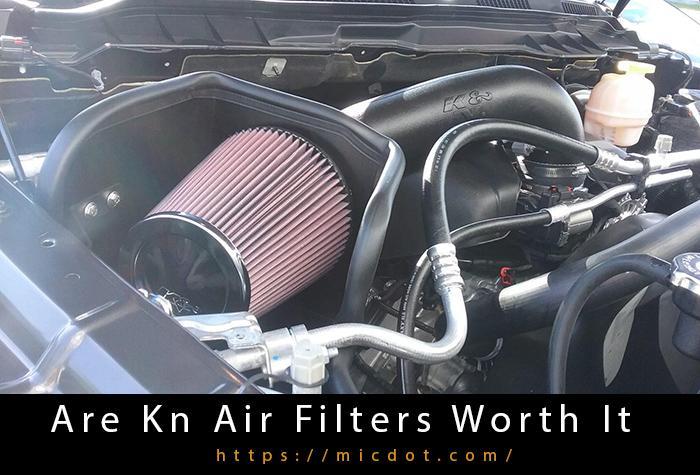This article contains affiliate links. Using any of the links on this page will allow me to earn a small commission at no additional cost to you.
An overheated engine can be caused by a variety of factors. For your part, it is your responsibility to identify the problem and fix it so you can get back on the road. You may be able to fix overheating on your own without consulting a mechanic in some instances.
You Are Watching: How To Fix Overheating Car ? Updated 04/2024
Because of the nature of automobiles, they tend to overheat at the most inconvenient times. The needle and your blood pressure will rise at the same time. A bad experience is seldom a good one.
You’ll learn how to fix an overheating car in this post. With this information, you will be more prepared if your automobile overheats.

What Makes a Car To Overheat?
There are numerous causes that might cause your car to overheat, as I described previously. Here are a few things to keep an eye out for:
a hole has appeared
Coolant that is being circulated in the wrong way
It’s time to replace a hose.
Thermometer malfunction
The cooling system is riddled with internal junk.
Cooling fan not working properly
There was an issue with the radiator.
The radiator’s air inlet is obstructed.
What Happens When a Car Overheats?
Basically, the computer that controls your car’s engine will begin taking cautious measures to protect it when the coolant temperature in your car rises, according to the Engine Control Unit.
A reduction in ignition timing and a rise in fuel injection into your engine will occur throughout this process.
To a modest degree, these procedures will reduce the amount of heat that is generated, but they will greatly prevent a detonation or knock from wreaking havoc on a car’s engine.
What Do I Do When My Car Overheats?
In the first place, if your automobile begins to overheat, you don’t want to panic because it won’t cure the problem but will simply raise your blood pressure. Instead, quietly pull over to the side of the road and turn off your air conditioning if it’s on, rather than panicking.
However, if you are unable to pull over, switch on your heater so that the warm air from the engine can be drawn into the cabin. To reduce overheating, it’s a good idea to roll down the windows of your car.
Pull over to a safe location and open the car’s exhaust for a few minutes to allow it to cool down. Afterwards, investigate the engine bay to see what caused the problem (we’ll cover this in more detail below).
The first step in repairing an overheated car is to determine what’s causing it to overheat in the first place.
How To Fix Overheating Car
Diagnose the problem if you can’t prevent your automobile from overheating (which is commonly the situation) and you’ve already experienced this.
First and foremost, have a look at the video below to learn how the cooling system’s critical components work.
The first step to finding any problem in an automobile is to have a strong grasp of the system you’re working with. Then you’ll be in a good position to fix the problem.”
But the most common causes of cooling system failure are:
a faulty pump for the water supply
A faulty air conditioner
Thermostat problem
Leakage of coolant
Read More : Virginia Window Tint Law Updated 04/2024
Radiator cap seal is blown.
Fluid that has been tainted with pathogens
In the cooling system, there are bubbles.
The head gasket is leaking.
1. Car Overheats Only At Low Speeds
It is possible that you have an airflow issue if your vehicle only overheats at modest speeds, most likely in the city.
At low speeds, a lack of ram air causes the radiator to overheat. If this is the case, make sure the fans on your vehicle are turning on.
Ensure that your fan clutch is working properly if you have a mechanical fan. See how it’s done in the video above!
2. Fan is Working, Revving the Engine Brings Down the Temperature
If your fans are working properly and the coolant temperature needle drops precipitously when you lightly rev the engine at idle, you most certainly have an issue with coolant flow.
Allow the engine to cool down completely before inspecting the radiator and the overflow bottle to make sure you have enough antifreeze in both places to diagnose this. If that doesn’t work, look for leaks in the system. Check to see if the seal on the water pump has broken.
The radiator hose clamps, the plastic end tanks of the radiator, and, most critically, the radiator cap should all be checked to see if the seal has broken.
If the leak isn’t too significant, simply adding more coolant may suffice as a stopgap measure until the malfunctioning component can be repaired.
In addition to external dribbles, loss of coolant can also be caused by engine leaks such cracked heads or defective head gaskets, which should be noted.
There are several techniques to verify this, such as:
Observe whether the exhaust is producing white smoke and whether the engine is running poorly before assuming anything. Coolant may be leaking into the combustion chamber if that’s true.
Keep an eye out for signs of excessive or murky oil. Check to see whether there is any brown coolant left in the bottle or radiator. That would imply that the coolant and oil are mingling, which would be a problem.
Use a gauge to do a compression test, which you can either rent or purchase from your local car parts store. A burst head gasket could be the cause of low compression on two adjacent cylinders. That’s why it’s a good idea to examine the spark plugs to see whether they look like they’ve been steam cleaned.
Pump some air into the cooling system with a radiator pressure tester. See if there are any exterior leaks if it doesn’t hold pressure. A bad head or head gasket may be to blame if there’s no noise at all.
To determine if a faulty head or head gasket is the source of any radiator bubbles, start the engine and take off the radiator cap while you inspect for any pressure leakage into the cooling system.
A coolant leak may not be the problem if you find that the fans work properly and that the system has enough coolant, yet revving the engine still causes the cooling fluid temperature to drop. Coolant flow or quality may be a factor in the issue.
Listening for sounds around the water pump might help you determine whether or not the impeller on the pump is broken. An overheating problem results because the antifreeze flow rate is extremely low.
In addition, dirty coolant tubes can limit the coolant’s heat capacity and cause clogs. When the engine is cold, open the radiator cap and check to see if there is any debris in it.
The serpentine belt pulley on the water pump should also be checked by cranking the engine and listening for screaming or slippage. If this is the case, you may have a problem with your engine’s pump speed.
Coolant leaks can occur even when there is plenty of coolant in the car, a functioning heater system, no noise from the water pump or pulley, engine revving lowers the coolant’s temperature and all of the aforementioned factors are present.
Your mechanic may need to remove the air from the bleed ports if that is the case.
3. No Coolant Leak, Fans Work, & Revving the Engine Does Nothing
A dead water pump or a clogged thermostat may be to blame if you have adequate clean coolant, your fans are working perfectly, and running the engine at idle doesn’t lower the temperature of your engine.
An easy test for a bad water pump is to switch on your heater and see if it’s blowing at or near room temperature.
It’s best to wait until your engine has reached its normal operating temperature before testing the heater’s effectiveness by squeezing the radiator inlet pipe.
Observe whether or not it feels like coolant is moving through it. If the radiator’s inlet hose does not feel warm or pressured, it’s possible that your thermostat is malfunctioning.
As a result, instead of removing heat from the radiator and allowing it to escape, the cooling system of the car keeps recirculating it through the engine, eventually leading to overheating.
Read More : Two Bedroom Fifth Wheel Reviews Updated 04/2024
Your mechanic will be the next port of call.
Most of the methods for repairing an overheating car described here involve a certain amount of self-assurance and competence. Your mechanic should be contacted if you are unsure whether or not you can solve the problem on your own.
Learn more about this by watching the video below:
How To Prevent Your Car From Overheating
Here are a few things you can always do to keep your car from overheating after you’ve learned how to cure an overheating automobile.
Despite the fact that you may not be able to completely avoid overheating, the following suggestions will greatly lower the risks of your car overheating.
Don’t put off replacing the coolant.
Make use of the appropriate cooling medium.
Ensure that the radiator is replaced on schedule.
Thermostat replacement is required.
The belt needs to be replaced (s)
It is imperative that you replace the water pump as soon as possible.
Take care of your hoses by replacing them as soon as possible.
Look for a leaky radiator cap!
Inspect the sensor for coolant temperature (s)
Maintain the vehicle’s engine and transmission.
Avoid obstructing the radiators
Check the inlets on the bumper.
Liner and guide replacement if necessary due to damage or loss.
Frequently Asked Questions
How much does it cost to fix a car that is overheating?
The cost of repairing an overheating car can range from $500 to $1500 for most vehicles. Replacement of the radiator, head gasket and water pump are included in this price.
Specialized engines and diesels may necessitate more expensive repairs.
Can I still drive my car if its overheating?
You can’t do that. An overheated engine should be avoided at all costs. The only time you should drive an overheated car is when the engine has cooled down.
What happens if your car overheats and you keep driving?
With an overheated engine, the cylinder heads will eventually distort, which will cause the top/head gasket to explode, resulting in more serious issues.. Of course, this would necessitate a costly and time-consuming fix.
Is my engine ruined from overheating?
It’s true that engine damage can result from overheating. If your engine is frequently overheating, you need to take action right now. Damage like as deformed cylinders and fractured head gaskets can be caused by this.
Antifreeze can leak from the engine if the head gasket is damaged.
Can a car catch on fire if it overheats?
No, even if it overheats, a car won’t catch fire unless there are additional issues with the vehicle.
How long does it take for a car to cool down after overheating?
An engine must cool down for at least 30 minutes before it is safe to handle.
Can I use water instead of coolant in an emergency?
Yes! As a coolant, it is possible to use water but it is not suggested because water cannot be used beyond its boiling or freezing points.
Conclusion
No one wants to have their automobile overheat for any reason. If I could, I wouldn’t even wish it on my worst enemy.
However, as previously indicated, you shouldn’t be alarmed. You should always keep an eye on the temperature of your automobile when you’re behind the wheel. Pull over whenever you realize that the temperature has risen above the required level.
If you’re unable to fix the problem yourself, you can always call in a tow truck mechanic.
Sources: https://micdot.com
Category: Car










